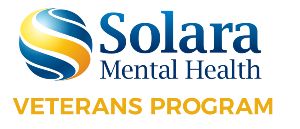
DSM-5 Self-Test for Depressive Disorder Types
Did you know depressive disorder affects over 16.1 million Americans or 6.7 percent of the adult population?
Depression, often known as clinical depression or major depressive disorder, is a widespread and severe mood illness that affects millions of people every year.
A doctor’s diagnosis involves 5 or more symptoms, as shown in the Diagnostic and Statistical Manual of Mental Disorders (DSM-5).
Do you want to know how to self-test for different sorts of depressive disorders? Then give serious thought to learning about psychiatric disorders according to the DSM-5.

Time’s up
This test should be used as an educational tool. It is not a replacement for a proper diagnosis of any mental health disorder. If you are experiencing mental health issues, please contact a professional as soon as you can. If you are having thoughts of suicide, please call the National Suicide Prevention Lifeline at 800-273-8255.
What Is Major Depressive Disorder?
Depression, often known as clinical depression or Major Depressive Disorder (MDD), is a very common, widespread, and dangerous mood illness.
So how do you feel if you are depressed? People suffering from depression are plagued by constant emotions of melancholy and feel hopeless. As a result, these people tend to lose interest in activities that they used to find enjoyable.
Apart from the emotional issues that might arise due to depression, people may also have physical symptoms. These symptoms being persistent pain or digestive disorders. To diagnose depression, depressive symptoms must be present for at least 2 weeks.
DSM-5 Diagnostic Criteria for Depression
According to the DSM-5, you must meet the following criteria to establish a diagnosis of depression. During the same 2-week period, the person must have 5 or more symptoms, at least one of which is depressive mood or loss of feeling pleasure or interest.
DSM-5 symptom criteria for Major Depressive Disorder include:
- A depressed mood all the time
- Minimal interest or pleasure in activities most of the time
- Significant fluctuation in weight, either loss or gain
- A decrease in bodily activity and a slowing down of thinking are two effects
- Almost every day, experiencing fatigue or a lack of energy
- Constantly feeling guilty or worthless
- Lack of focus in your thoughts and lack of concentration
- Suicidal thoughts
These symptoms must cause the person clinical harm or distress in social, vocational, or other key areas of functioning for diagnosis of depression. It is also necessary that the symptoms are not a consequence of drug misuse or another medical issue.
The Sub-Types of Major Depressive Disorder
There are many types of major depressive disorders. Let’s look at them:
Major Depressive Disorder with Psychotic Features
Depressive disease with psychotic symptoms, such as major depressive disorder, is a separate depressive illness. In this type of MDD, you associate mood instability with either delusion, hallucination, or a combination of the two. About 18.5 percent of people with MDD have psychotic symptoms. In addition, the frequency of MDD with psychotic characteristics increases with age.
Persistent Depressive Disorder
Persistent depressive disorder, also known as dysthymia. This is a form of depression that lasts for an extended period of time. As a result, you may feel unmotivated in your typical daily activities.
Also, you may feel despondent, be unproductive, have low levels of self-esteem, and have a general sense of inadequacy. These sentiments in persistent depressive disorder can linger for years and can have a substantial impact on your partnerships, schooling, and other daily activities, among other things.
Seasonal Affective Disorder
Seasonal affective disorder (SAD) is a type of depression that comes and goes in a seasonal pattern.
Known as seasonal affective disorder (SAD), it is a form of depression that manifests itself in a predictable seasonal rhythm. It is also known as the ‘winter depression.’
Some people suffering from SAD may suffer from symptoms during the summer and recover during the winter.
There are many symptoms when you suffer from SAD. You can suffer from some or all of the below symptoms of SAD.
Symptoms of Seasonal Affective Disorder include:
- Extreme sadness (major depression), Emptiness, emotional darkness, and hopelessness
- A decrease in interest or pleasure in routine daily tasks
- Being constantly irritable
- Despair, remorse, and a sense of uselessness
- Throughout the day, you may be feeling sluggish, low on energy, and tired
- Sleeping for a longer period of time than usual and finding it difficult to get out of bed in the morning
- Carbohydrate cravings and weight gain
These symptoms can be extremely distressing for some people. It can also have a considerable impact on your normal day-to-day interactions and activities.
Atypical Depression
Depending on the circumstances, atypical depression may serve as a sub-type for either severe depression or dysthymic illness. People who suffer from atypical depression often encounter depression for the first time at a young age. This is typical during their adolescent years.
Mood reactivity is one of the major differences between atypical and melancholic depression. If something good occurs, the individual with atypical depression mood improves. Positive changes seldom cause a mood shift in melancholic depression.
You must accompany mood reactivity with two of the following symptoms:
- Excessive sleeping
- Weight gain or an increase in appetite
- Having a stronger response to rejection or being more sensitive to rejection, which may lead to difficulties in relationships
- Having the sensation of having a burden, being immobile, or bogged down
Despite its name, atypical depression is very widespread.
Depressive Episodes With Catatonia
Occasionally, depression is coupled with catatonia.
What is catatonia? Catatonia is a state in which a person does not react to their environment. In other words, catatonic depression is a form of depression marked by the inability to speak or the appearance of being in a stupor for an extended length of time.
The most common symptoms associated with catatonia are mutism (not speaking) and stupor (the state of being in a daze).
To have a diagnosis of depressive episodes with catatonia, a person must suffer from at least 3 of 12 symptoms.
Symptoms of Depressive Episodes of Catatonia include:
- Restlessness, being in an agitated state, or anxious
- Echolalia is the mindless repeating of another person's words
- Catalepsy or known as being in a trance-like condition
- Echopraxia, or the senseless repeating of another person's motions
- The prolonged use of a stiff or unnatural pose
- Grimacing or creating a face that appears pained
- Stereotypy, or repetitive motions like swaying or repeatedly crossing and uncrossing legs
- Sudden apathy to stimuli, such as when people speak to the person
- Mutism, or failure to communicate
- Negativism, or the practice of adopting actions that are opposed to their feelings
- Wavy flexibility refers to a state in which an individual does not react to instructions and maintains an immobile posture
- Peculiar mannerisms, such as atypical speaking habits, body movements, or gazing
A person suffering from catatonic depression is likely to have typical depression symptoms as well. These can be as feeling down or depressed. They may also experience a feeling of despair.
Depression With Melancholic Features
According to the DSM-5, Melancholic Depression is sometimes referred to as MDD with melancholic features, and it was formerly referred to as “endogenous depression.”
It is a subset of depression marked by a significant loss of enjoyment and several physical symptoms that manifest themselves.
Melancholic depression is characterized by symptoms such as:
- Insomnia or sleeplessness
- Weight loss
- Abnormalities in psychomotor function
Interestingly enough, the DSM-5 specifier “with melancholy characteristics” is also used to diagnose bipolar disorder.
Depression With Anxious Distress
Anxiety is widespread among people suffering from depression.
To be classified as anxious distress, at least two of the following symptoms must be present:
- Feeling a little pumped up or tense
- Experiencing abnormal restlessness
- Worry is causing you to have difficulty focusing
- An apprehension that something terrible will happen
- A feeling of being on the verge of losing control
Anxiety is widespread among people suffering from depression.
To be classified as anxious distress, at least two of the following symptoms must be present:
- Having two symptoms denotes mild anxious distress
- Three symptoms denote moderate
- Four or five denotes a moderate to severe stage
- More than 5 denotes severe anxious distress
Extremely high depression and anxiety are linked with a higher risk of suicide, a longer duration of disease, and a larger chance of not responding to treatment.
Associated Repercussions of Suffering from MDD
Unfortunately, MDD is linked with a high death rate, with suicide accounting for a large proportion of that rate. Consequently, if you suspect someone close to you is suffering from depression, it is critical to be aware of suicidal signs and to treat suicidal comments very seriously.
If you notice any of these suicidal signs in someone who is depressed, urge them to get help from a health professional right away.
Individuals who are depressed also exhibit impatience, brooding, and compulsive thinking, anxiety, fears, excessive concern about their physical condition, and complaints of pain, among other symptoms.
What is the Difference Between Feeling Sad and Depression?
What exactly is the distinction between sadness and depression? Given that the main symptom linked with depression is sadness, it may be difficult to distinguish between the two types of mental disorders.
Feeling Depressed
However, depression is more than just being depressed, and it is not defined only by the degree to which one is depressed. Although the degree to which a person is depressed is not significant, a variety of factors, including the length of these bad emotions, additional symptoms, the physical impact on the individual, and the influence on their ability to function in everyday life, may make a significant difference.
There is no trigger required when it comes to depression. If you are suffering from depression, you can feel depressed or hopeless about anything at any time. A person may have every reason on earth to be joyful, yet they cannot feel such emotions.
While depression is linked with significant disturbance of regular eating and sleeping habits, it is also connected with a persistent inability to get out of bed throughout the day.
Finally, those suffering from severe MDD may have thoughts of self-harm, dying, or suicide, or they may have made plans to kill themselves.
Feeling Sadness
Every person will feel sadness at some time in their life. It is a natural emotion that we will all encounter. Sadness is normally a result of a specific situation, event, or even a person.
For example:
- A job loss
- The end of a relationship
- The death of a relative or friend
Even though you may be depressed for a day or two after experiencing sadness, you will still be able to appreciate simple pleasures—for example, a meal, friends’ company, or even a simple TV show.
However, unlike when you are depressed, when you are sad by a happening, you can still go about your daily functions as you normally would.
As with depression, you may feel regret or remorse for action, but you will not be plagued by a lasting feeling of emptiness or guilt, as you would be with depression.
Finally, suicidal tendencies and self-harm do not come into play due to sadness in a non-depressive state.
How To Get Help
MDD is treatable! People suffering from MDD illness may be treated in the overwhelming majority of cases if they seek expert treatment.
Several conventional methods are successful, including:
- Therapy treatment
- Prescribed medication
- Alternative treatment
- Transcranial Magnetic Stimulation
Severe depression may need a stay in a hospital or an outpatient treatment program until you start to feel better.
Most depressed individuals benefit from medication and counseling. Your doctor or psychiatrist may prescribe medications. The benefits of visiting a mental health expert are many.
Therapy Treatment
Psychotherapy is a word used to describe consulting with a mental health expert about your depression.
Depression may be so severe that hospitalization in an in-patient facility is required. This may be required if you can’t adequately care for yourself or a dependant.
Unstable moods may be stabilized with inpatient psychiatric therapy.
Some people can benefit from day therapy programs, as well. Symptoms can be kept under control with the help of these outpatient programs. In addition, these programs offer support and counseling to patients.
Different kinds of psychotherapy, such as cognitive-behavioral therapy and interpersonal therapy, are helpful in the treatment of depression.
Prescribed Medication
Your doctor may prescribe some antidepressants to treat you for your MDD. There are many types of medicines available.
Patience is really a virtue here! You may likely need to try several different medications or combinations of medications before you find one helpful for you.
Consult your doctor or chemist about any potentially serious side effects.
Alternate Therapy
Alternatives to face-to-face depression treatment sessions are available and may be helpful for some individuals. Therapy may be delivered through computer software, online sessions, movies, or manuals. Programs may be therapist-led or completely self-directed.
Discuss these optional alternate therapy methods with your therapist before selecting one.
Transcranial Magnetic Treatment
Trying to treat MDD with antidepressant drugs may be frustrating and futile. When conventional medicines and therapy don’t work, it isn’t easy to know what to try next.
Transcranial magnetic treatment is a treatment that utilizes magnetic fields to activate brain cells to treat depression. TMS is used when other depression therapies have failed.
Don't Reach Rock Bottom, Take A Helping Hand!
If you or you think someone you love may be suffering from a depressive disorder, you should approach a mental health professional for help. They will use the DSM-5 criteria to confirm your diagnosis.
Obtaining assistance is critical to overcoming depression. It may be tough to keep a healthy outlook and the work needed to overcome depression on your own.
Why not contact us today? One of our compassionate and dedicated experts will take the time necessary to answer all of your questions and give you the help you need.
Sources
- Anxiety & Depression Association of America. (n.d.). Facts & Statistics: Anxiety and Depression Association of America, ADAA. Retrieved September 15, 2021, from https://adaa.org/understanding-anxiety/facts-statistics
- Wagner, G. S., McClintock, S. M., Rosenquist, P. B., McCall, W. V., & Kahn, D. A. (2011). Major depressive disorder with psychotic features may lead to misdiagnosis of dementia: a case report and review of the literature. Journal of psychiatric practice, 17(6), 432–438. https://doi.org/10.1097/01.pra.0000407968.57475.ab
- Mayo Clinic. (2018, December 08). Persistent depressive disorder (dysthymia). Retrieved September 16, 2021, from https://www.mayoclinic.org/diseases-conditions/persistent-depressive-disorder/symptoms-causes/syc-20350929
- StatPearls. (2021, May 21). Catatonia. Retrieved September 16, 2021, from https://www.statpearls.com/ArticleLibrary/viewarticle/19014

